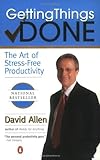Without trashing it up.
Before I dive into this topic, I want to make it clear that I really hate the way some Web sites and blogs are so covered with advertising that it appears that the only reason the site/blog exists is to get visitors to click advertising links and earn money for the site/blog owner. You know what sites I’m talking about. It’s pretty obvious when advertisements take up more space in your browser window than the actual content you came to read.
(I’m actually involved with one of these sites. It’s a long story that’s still evolving. I’ll tell you more about it in a future article here. But my failure to provide the URL in this note should give you the idea that I’m not very proud of it.)
All that said, if you publish a Web site or blog and you’re not doing anything to monetize it, you’re leaving money on the table. And that point really hit home when I read that one of the bloggers I follow makes over $15,000 a month from Adsense revenue alone. Sheesh.
It seems that I need to walk a fine line between keeping my site free of advertisements (100% content per page, no revenue) and trashing it up with all the affiliate program and other advertisements I can get my hands on (25-50% content per page, some revenue).
After all, this site’s goal is not to make money. Sure, one goal is to promote my books and other work and support readers so they buy more books. And to attract new readers who buy books. There’s money there. But my other goals are to sound out about the things on my mind and take notes I can consult in the future about the things I do and see.
But can you imagine how much time I could spend doing, seeing, and blogging if my site brought in $15K/month?
(To be fair, you must consider the costs associated with maintaining such a site. If only 1% of a site’s visitors react to an advertisement by clicking on it — and that’s probably a high estimate — imagine how many visitors you need to crank up $15K of Adsense earnings. We’re talking thousands of page hits an hour. Those visitors eat up bandwidth at an alarming rate. Bandwidth costs money. So a bunch of that revenue is probably eaten up by hosting costs.)
One of the things that drives me is my own feeling towards advertising-heavy sites. I find them distasteful and I avoid them. That makes me think that if I filled my site with ads, people might use that as an excuse to stay away. Less visitors should mean less revenue, right?
Well, last week I started integrating Adsense ads into my sites. I’m trying to do it tastefully, with ads in various positions, depending on the site and the type of page. You may have noticed them. For the most part, they’re near the bottom of pages — which is not the recommended location to get clicks. wickenburg-az.com has a link unit across the top of the page, right beneath the header image. It’s color coordinated, so it fits in. There are text links at the bottom of single pages (that’s a page with a single article and all of its comments) on this site, and other text links in the sidebar for the Home and Category pages. wickenburg-az.com has a few image ads, which really concern me — some of them can be really tacky, with flashing graphics and obnoxious images. (I’m personally offended by some of the graphics in dating ads, like the ones you might see on Slate.com. They’re using women to sell sex.)
I also set up Adsense channels, which is another topic I need to write about here. They help me see where the revenue is coming from when I look at Adsense reports. Sure enough, my revenue stream took a big jump when I added the ads.
Today, I set up LinkShare, an affiliate program that enables me to display all kinds of ads. Unlike Adsense, however, people have to buy something after clicking the link to earn me money. The percentages are higher, but what are the chances of someone actually clicking and buying?
With LinkShare, you choose the companies you want to represent and apply. I chose a bunch that I thought would interest my blog’s visitors. A bunch automatically accepted me. One declined me, but when I questioned them, they said it was an error and they approved me. Another declined me because I have no dedicated shopping areas on my site. In other words, they want sites with lots of ads. I’m waiting for a bunch of others.
Then I set up the WordPress Ad Rotator plugin to display a single 125×125 pixel “button” near the bottom of the Sidebar on all pages of this site. I had to manually copy and paste the code for every single ad I wanted to use. It took a long time and the task was boring and tedious. But it does display the clickable ads.
I could get fancy and set up the rotations based on categories, but I’m keeping it simple right now. I just want to see if this actually does earn revenue.
So that’s where I stand right now: ads from Adsense and LinkShare.
I’ll report on my progress when I start getting some reports from LinkShare. I’ll also put together that Adsense Channels article one of these days. I think it’s a great tool for seeing which pages and types of ads work best.

